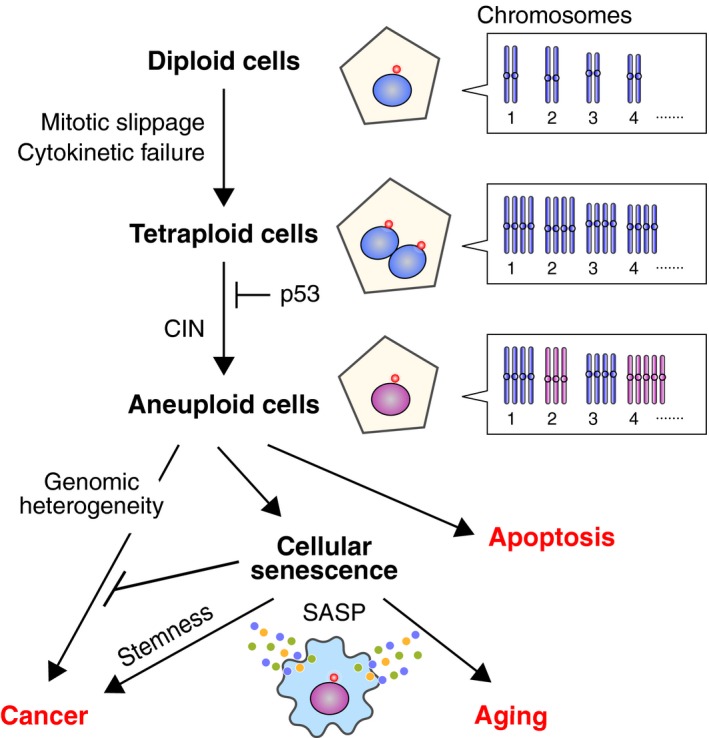Figure 1.

Plausible routes from tetraploidy to cancer and aging. Tetraploid cells are formed from diploid cells mainly through mitotic slippage and cytokinetic failure. Proliferation of tetraploid cells is suppressed by p53, but cells that have overcome this barrier show chromosomal instability (CIN) and develop into aneuploid cells. Genomic heterogeneity caused by CIN accelerates karyotypic evolution that confers tumorigenic potential. However, aneuploidy is generally detrimental to cellular fitness, leading to apoptosis or cellular senescence. Cellular senescence is primarily an anticancer mechanism, but senescent cells increase in number with age, and this might contribute to tissue disorders associated with aging by compromising functionality and reducing the regenerative potential. Secretion of various pro‐inflammatory proteins from senescent cells, referred to as the senescence‐associated secretory phenotype (SASP), also promotes both tissue disorders and tumorigenesis. It was recently shown that senescent cells show stem cell‐like gene expression patterns and exert aggressive growth potential following release from senescence.95
